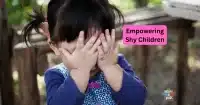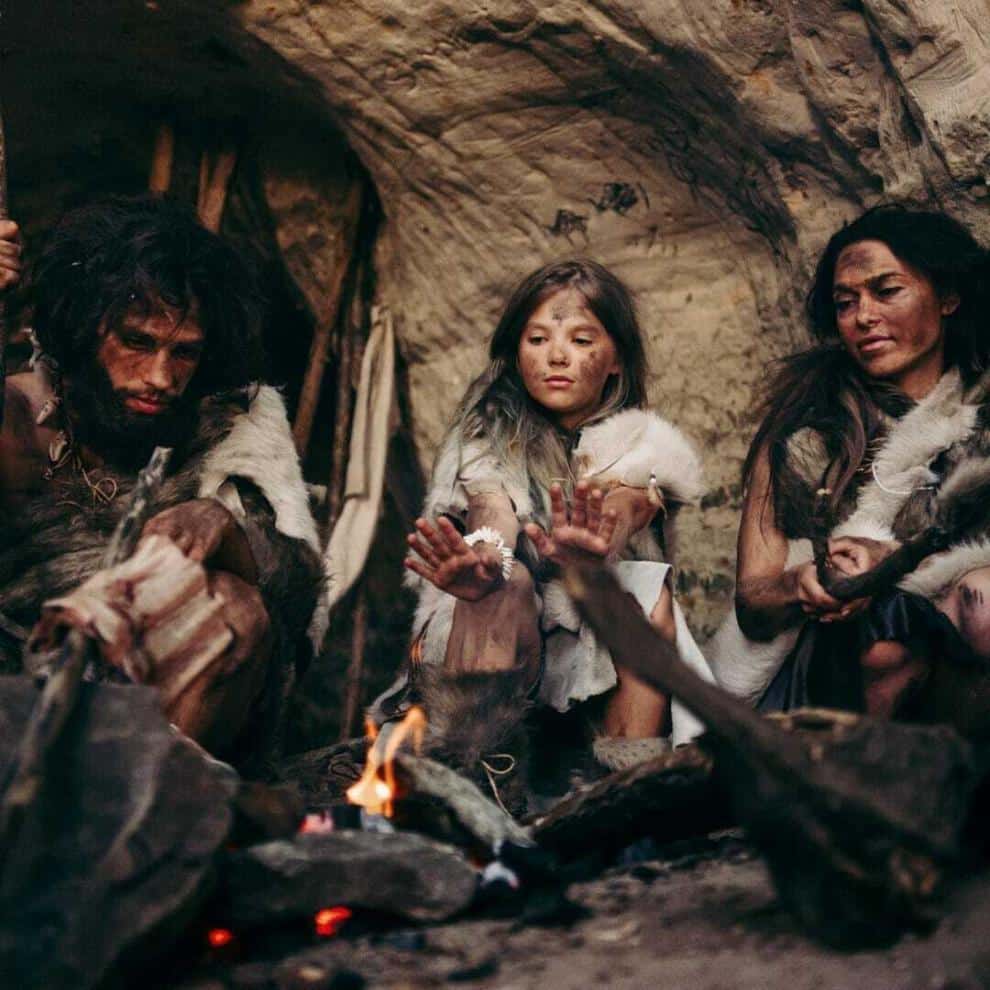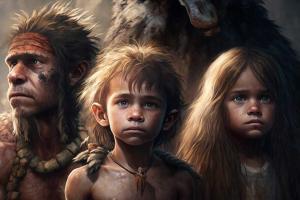In a world of climate change and technological advancement, it’s easy to forget the strength and adaptability of our ancestors, how similar they were to us in many ways and how different. There are many things we can learn from what it was like to be a child and parent during ancient times. The children living in the ice age were exposed to a harsh environment that required them to develop unique survival skills. They learned to be resilient and adaptable, to appreciate the power of nature, and the importance of community.
Today, we can learn valuable lessons from these early humans. By studying their experiences and applying their lessons, we can develop the same resilience, creativity, and adaptability that helped them to survive in a harsh and unpredictable world.
As we look back we will explore the life of a child in the ice age and the lessons we can learn from them. We will examine their skills and traditions, the challenges they faced, and the ways in which they worked together to survive. By learning from their experiences, we can develop the skills and attitudes necessary to overcome challenges, protect the environment, and build a better world for ourselves and future generations.
If you are interested in learning more about the children living in the ice age and the lessons we can learn from them, keep reading. We will delve into the world of these early humans, explore their unique way of life, and discover the wisdom they can offer us even today.
Let’s pretend it was a time long ago, before the days of fancy contraptions and electric lights, before the days of tall buildings and bustling cities. It was a time when the world was ruled by the ice and snow, and only the strongest and most resourceful creatures could survive. It was the time of the ice age, and life was a harsh and unforgiving experience, especially for a child.
A child living in the ice age would have been born into a world vastly different from the one we know today. The world would have been a place of stark contrasts – an endless expanse of ice and snow punctuated by the occasional glacier or rocky outcrop. The landscape would have been barren and inhospitable, and the climate would have been brutally cold.
Survival in the ice age would have required a high level of ingenuity and resourcefulness. The child would have had to learn how to find food and shelter in an environment that offered very little in the way of resources. The child’s family would have been hunters and gatherers, constantly on the move in search of food and safety.
A child would have grown up in a world where danger lurked around every corner. Predators such as cave bears and saber-toothed cats would have been a constant threat, and the child would have had to learn how to avoid them or defend themselves against them.
This child would have learned how to make clothing from animal hides, how to start a fire, and how to build a shelter from the materials available in the environment. He or she would have learned how to track game and how to hunt with spears and traps. These skills would have been essential for survival in the ice age.
Life in the ice age would have been a constant struggle for survival, and the child would have grown up with a strong sense of resilience and self-reliance. They would have had to rely on their own ingenuity and resourcefulness to survive, and they would have had to learn how to work together with their family and community to overcome the many challenges they faced.
Despite the harshness of life in the ice age, the child would have experienced moments of wonder and beauty. The northern lights, the stars twinkling in the clear night sky, and the snow-covered landscape illuminated by the glow of the moon would have all been sources of awe and inspiration.
Living as a child in the ice age would have been a challenging and often harsh experience, but it would also have been one filled with wonder and awe. Kids would have learned valuable skills and developed a strong sense of resilience and self-reliance that would have served them well throughout their life. And while the world of the ice age may seem distant and foreign to us today, it is a part of our shared human history, and it has much to teach us about the enduring power of the human spirit.
As children grew up, they would have begun to take on more responsibilities within their community. They would have learned how to work with other members of their tribe or family to carry out tasks such as hunting, gathering, and building shelters. These tasks would have been crucial for the survival of the group, and the child would have learned to take them seriously and work diligently to carry them out.
One of the most important lessons kids would have learned would be the value of community. In a world where danger was always present, the child would have come to understand that survival depended on working together with others. They would have developed close bonds with their family and tribe members, relying on them for support and protection.
Despite the many challenges of life in the ice age, a child would have found moments of joy and laughter. They would have played games with their siblings and friends, telling stories and creating art. These moments of play and creativity would have been important for their emotional and psychological well-being, helping them to stay resilient in the face of difficult circumstances.
As children grew older, they would have begun to take on more responsibilities and become more independent. They would have started to contribute more to the survival of the group, taking on tasks such as hunting or gathering on their own. They would have also begun to learn important skills such as navigation, using the stars and other natural features to guide them on their travels.
Life in the ice age would have been a constant struggle, but it would also have been a life full of wonder and beauty. The child living during this time would have grown up in a world where the natural environment was the dominant force, shaping every aspect of their existence. They would have learned to respect and appreciate the power of nature, and to work with it to ensure their survival.
Life in the ice age would have been a unique and challenging experience, but one that was full of important lessons and valuable skills. Kids would have learned the value of community, the importance of resilience and self-reliance, and the beauty and wonder of the natural world. While we may never be able to fully understand what life was like for these early humans, we can still learn from their experiences and draw inspiration from their remarkable ability to adapt and thrive in even the harshest of environments.
As children approached adolescence, they would have begun to learn the customs and traditions of their people. These customs would have included the creation of artwork and the telling of stories, which would have been passed down from generation to generation. They would have learned to express themselves through art, creating intricate carvings and paintings that captured the beauty and mystery of the natural world.
As the ice age drew to a close, children and their parents alike would have witnessed significant changes in their environment. The glaciers that had once covered much of the land began to recede, revealing new areas of grassland and forest. These changes brought new opportunities for hunting and gathering, as well as new challenges as the child and their community adapted to a new way of life.
They would have lived in a world that was constantly changing, with new threats and opportunities appearing all the time. But through it all, they would have learned to be adaptable and resourceful, always finding new ways to survive and thrive.
In the end, the life of a child living in the ice age would have been a remarkable journey full of challenges and opportunities. The child would have grown up in a world that was harsh and unforgiving, but also full of wonder and beauty. They would have learned valuable skills and developed a deep appreciation for the power and mystery of the natural world.
Today, we can still learn from the experiences of these early humans. We can learn to appreciate the beauty of the natural world, to work together to overcome challenges, and to be adaptable and resourceful in the face of adversity. And as we face our own challenges in the modern world, we can draw inspiration from the resilience and creativity of those who came before us, who survived and thrived in even the most difficult of circumstances.
There are many lessons that we can learn from the experiences of children living in the ice age. Here are a few examples:
- Resilience and Adaptability – Children growing up during ice age lived in a world that was constantly changing and full of challenges. They had to learn how to be resilient and adaptable in order to survive. In our own lives, we can also face unexpected challenges and changes. By learning from the experiences of early humans, we can develop the same resilience and adaptability that helped them to thrive in a harsh and unpredictable world.
- The Value of Community – Kids during the ice age relied on their families and communities for support and protection. They learned to work together and support one another in order to overcome the many challenges they faced. In our own lives, we can also learn from this example and recognize the value of community. By working together and supporting one another, we can achieve great things and overcome even the most difficult of challenges.
- Creativity and Innovation – Children of the ice age had to be creative and innovative in order to survive. They had to develop new tools and techniques for hunting and gathering, and find new ways to adapt to changing environments. In our own lives, we can also learn from this example and develop our own creativity and innovation. By thinking outside the box and coming up with new solutions, we can overcome challenges and achieve our goals.
- Appreciation of Nature – Kids lived in a world that was dominated by the natural environment. They learned to appreciate the beauty and power of nature, and to work with it in order to survive. In our own lives, we can also learn from this example and develop a deeper appreciation for the natural world. By recognizing the beauty and importance of nature, we can work to protect it and ensure that it continues to thrive for future generations.
In summary as we finish our pretend journey back in time, the experiences of children living in the ice age provide us with valuable lessons that we can apply to our own lives. By learning from their resilience, adaptability, creativity, and appreciation of nature, we can develop the skills and attitudes that will help us to overcome challenges and achieve our goals. And by recognizing the value of community and working together, we can build a better world for ourselves and future generations.
















Add Comment